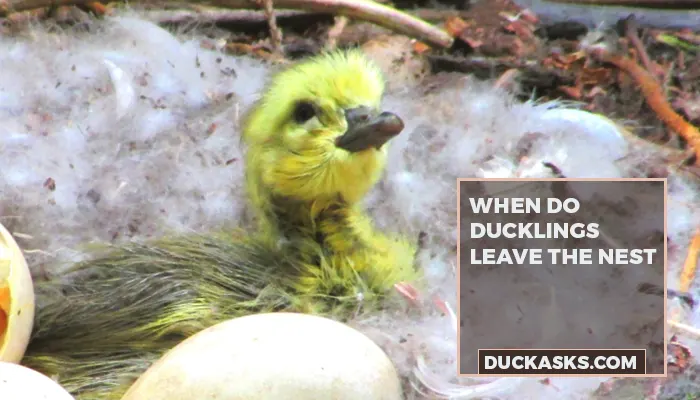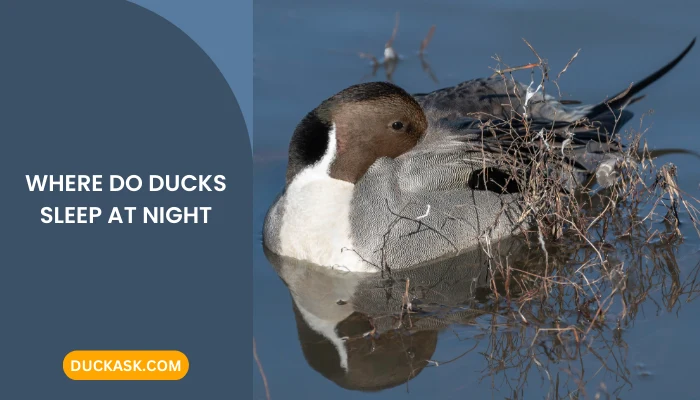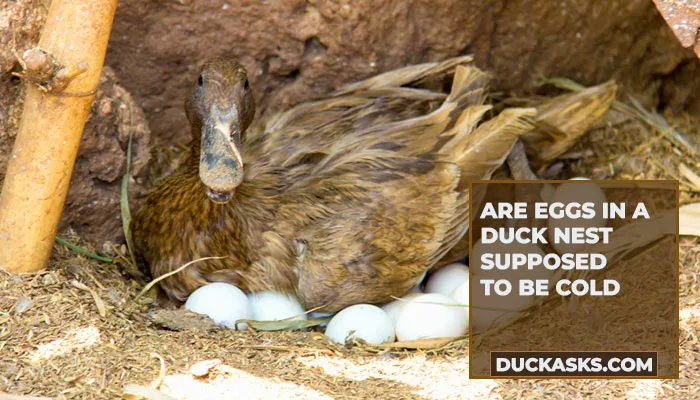Can Ducks Live in Cold Weather?
Most ducks are prone to migrate during the winter. At least the Northern Shoveler and the Blue-winged Teal prefer the warmer south over the extreme cold winds of the northern regions.
However, that quite doesn’t explain how all ducks feel about the winter, or more so, can ducks live in cold weather?
They can, actually. The migratory pattern of the ducks might make it seem like they are too weak for a drop in the temperature but don’t underestimate our feathery pal just yet.
As a duck owner, you are concerned about the ducks and how they deal with cold weather, and rightfully so. Until things get too extreme, your ducks will be just fine.
Every bit of confusion and concern you might be having at the moment will go away with the answers to all the questions below.
Want to learn more about ducks habitat
What Is the Coldest Temperature that Ducks Can Survive in?
The ideal lowest temperature is 20 degrees Fahrenheit, regardless of the species. Migratory ducks set for new destinations even before the temperature hits that level.
Domestic ones and some mallard species do alright as long as the water and food sources are not all frozen and they’re kept in coops with proper ventilation.
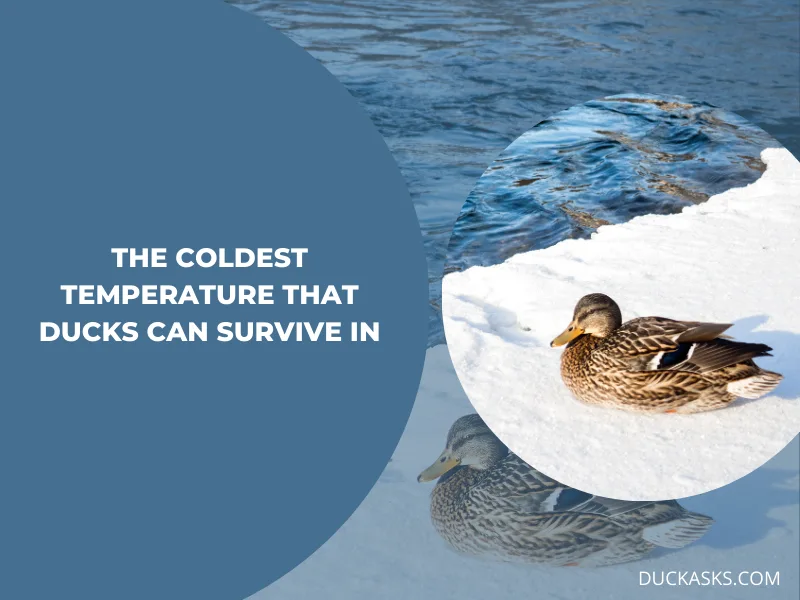
The main reason why ducks can survive as less as 20 degrees Fahrenheit is because they have a thick layer of body fat. Addititionally, on the skin, their waterproof feathers further help them to keep their body warm during winter.
But, during harsh winter below 20 degrees, ducks can’t go for long. Dieases like frostbite can make their survival in winter challenging. Also, they can die from starvation as finding foods in extreme wealther is almost impossible for them.
Do All Duck Breeds Have the Same Level of Cold Tolerance?
While 20 degrees Fahrenheit is considered safe for them, every duck reacts differently to the change in weather depending on their age and species.
Ducklings can’t handle cold weather below 90 to 80 degrees, which changes as they grow bigger.
Almost every species of duck can look after themselves well at the temperature of 20 degrees Fahrenheit with a heated water source and enough protein to keep them warm. However, these arrangements can do even more wonders for certain species.
Goldeneyes and a few Mallard breeds are known for their adaptability to a temperature below zero when the resources are alright. And the duck anatomy does the rest. Also, Muscovy, Cayuga, American Pekin, Call, Blue Swedish, etc. breeds are known as cold-weather ducks.
Can Ducks Stay Outside in the Winter?
Ducks can and do stay outside in the winter as long as the cold is bearable. The winter isn’t all blizzards and snowfall. Ducks carry on waddling when the ground is not freezing cold and the ponds are still watery.
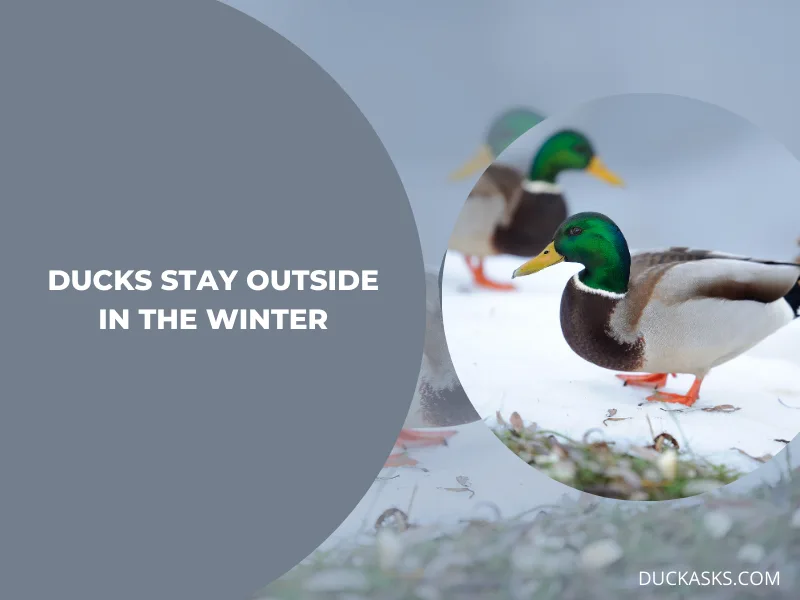
Besides, the arteries in their body are close to the legs. So there’s always an exchange of warmth between the legs and the body. The arteries transfer the warmth to the leg to protect them from getting too cold from standing on the ground.
Can Ducks Survive in Areas with Heavy Snowfall and Ice?
Snowfall and ice formation start around 30 degrees Fahrenheit, and ducks can survive through temperatures as low as 20 degrees. Species like Mallards, Khaki Campbells, and Muscovys are known for waddling around in the white snow.
What Are the Challenges of Ducks Living in Cold Weather?
Surely ducks can survive the cold weather like a champ, but it’s not all roses and butterflies. The winter does bring some trouble to their life, and this is why many ducks migrate to the south during that time.

Food Scarcity
The winter is a troubling time for the ducks living in the north as the snow envelops weeds and most other green food sources. Also, it’s hard to search for something edible in extremely cold weather.
Insects and worms are almost out of sight, and ducks themselves are too bothered by cold to scavenge for food.
Frozen Water
The water sources in the north freeze during winter, making it impossible for the ducks to swim or drink from them.
Also, ducks need open water sources to maintain their body temperature, which is trivial with the water being extremely cold or frozen.
Frostbites
Despite the bodily functions constantly working to keep them warm, the birds have their limits. Below minus 10-15 degrees or so, ducks are very likely to fall victim to frostbites.
What Adaptations Do Ducks Have to Survive Cold Weather?
From feathers to legs, ducks have a fascinating system to keep up with the cold weather.
Location of the Arteries
The veins and arteries responsible for transferring warm blood are close to the duck’s legs.
So the temperature transferred from the ground gets warm when it enters the lower body, and warm blood from veins transfers to the legs to keep them from getting cold.
Fat Layer Under the Skin
During the temperate months, they diligently embark on a quest for sustenance, amassing a high-calorie intake to fortify their fat reserves.
This strategic accumulation ensures they possess the essential insulation to withstand the unforgiving rigors of winter.
They have a layer of fat under the skin that provides warmth when things get too tough. The layer can be thickened with a high-calorie intake.
Down Feather
Down feathers in birds are mostly responsible for trapping external warmth when required. Their elegant down feathers emerge as an ingenious solution to weather the cold expanse.
Like virtuosos of thermal management, these birds artfully fluff their plumage, fostering an intricate system of air pockets that retain precious warmth.
Preen Gland
Ducks rub the oil extract emitted from their preen glands all over their feathers to make them waterproof. In the process of preening, a favorable amount of warmth is trapped under the feather.
Again, the feathers being waterproof keeps the duck from getting wet and cold, which plays a positive role in keeping them warm in the cold climate.
How Long Can Ducks Withstand Cold Temperatures?
They can stand it as long as their body or the shelter is protecting them against cold temperatures. The ducks will immediately show signs if the temperature is unbearable for them.

When the temperature is around 40 degrees, ducks do good without any issue. But, as the temperature falls, their body starts to adopt with the temperature.
Their body insulation can keep them safe around 20 degrees Fahrenheit. When the temperature goes below 20, it becomes less bearable for them.
Signs When Ducks Are Struggling to Survive the Cold Weather
The signs are not hard to understand when the temperature is beyond the normal low for ducks. It will go like the following –
● Ducks huddle too closely when they find the cold weather unbearable.
● They can’t stand still on their legs and often try to lift a leg up from the ground.
● They tuck the legs under the feathers instead of keeping them straight on the ground.
● They’re less active and prefer to stay inside the coop even in the daytime.
If you see your duck doing any of that, you should get the message. It’s time to provide some extra warmth before frostbite gets to them.
What Can We Do to Help Ducks Survive in Cold Weather?
As humans, we can do the absolute most to help ducks survive in cold weather. In fact, help from a human can help ducks easily survive through temperatures lower than 10-20 degrees.

That’s why you’ll see species like wood ducks having the hardest of the cold winter, as they don’t live with humans.
Build Shelter
You can build a duck run or coop specifically modified for the winter and help your ducks live through another winter without the extreme consequences.
Provide Food and Protein
As the ducks fail to scavenge for their own food during the winter, take the matter into your own hands. Prepare a duck feed with all the needed proteins, vegetables, and crops they’ll need when the temperature drops.
For ducks, oats, corn, weather are a good source of grains. You can also feed them lettuce, kale, spinach.
Fish as well as worms, grasshoppers, beetles will make sure the ducks get the needed protein, omega-3 fatty acides, and other nutrients.
Supplying Heated Water
You can either use a heated bird bath or place the water bowl on a heated surface to keep the water at an all-time usable temperature. Also, insulating the bowl with straw helps if the cold is not too extreme.
Adding More Insulation
Speaking of insulation, insulate everything and every place the ducks will use to keep them warm. Use plenty of straw and dry cardboard for insulation.
Not just the coops, windows, or the water bowl, but spread straws on their walking grounds as well.
What Type of Shelter Do Ducks Need in Cold Weather?
The short answer is a shelter that will keep the duck warm at all times. To elaborate, there are a few things you have to keep in mind while preparing a shelter for the ducks –

Insulation
The coop must be insulated entirely. Straws are the best material for insulating the space. Cover the resting ground with several thick layers of straw and fill up all empty space available so it feels cushiony and warm.
Ventilation
The moisture formed from the ducks breathing at night can make the shelter a bit cold. To prevent that from happening, make sure to have several window-like vents in the coop for exhaustion.
Don’t make them too low if you don’t want a fox to get a hold of the ducks.
Heating Arrangement
Despite insulation with thick layers of straw, there should be a separate heating arrangement to keep the water warm and for the more extreme days in general.
However, refrain from using anything flammable.
Tarps for Windy Days
The design of a traditional coop doesn’t stand a chance against extremely windy days.
But you have to allow the ducks some walking space too. Set up a tarp in front of the door to give them that space without wind getting in the way.
Bath
To keep the ducks active inside the shelter, put a heated bath near the coop. They can enjoy their regular bath and won’t have to walk out of the shelter for that.
What Type of Food Do Ducks Need During Cold Weather?
During winter, you will have to be creative with the waterfowl diet to keep them warm and healthy. Here are the types of intakes they must have in order to survive –
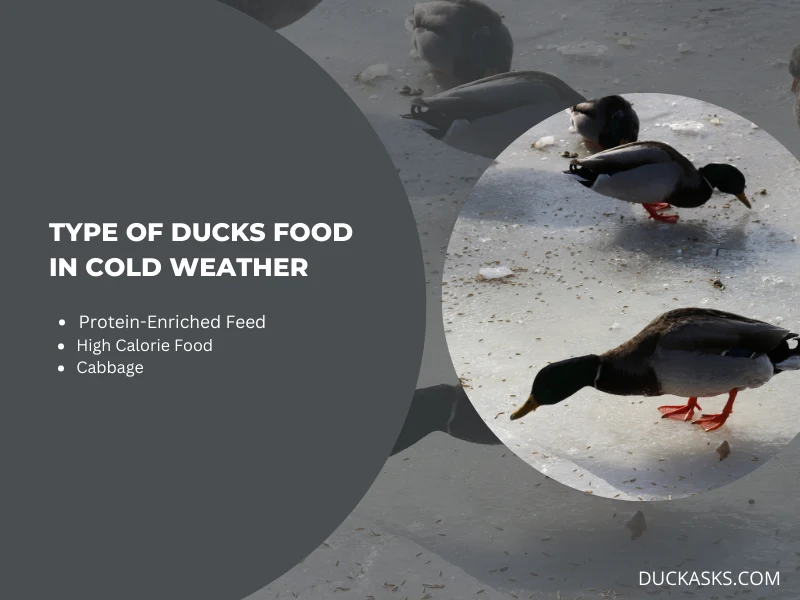
Ducks can’t always get their usual greens during the weather as some crops die out and others vanish beneath the snow. Naturally, the fat reserve also dies out, leaving them no choice but to migrate.
That’s why during winter it comes down to us to feed them.
Protein-Enriched Feed
Protein is a must for the body to function and produce the needed heat at trying times. Make sure to give them duck feed or poultry feed with an 18% protein intake.
High Calorie Food
They should be fed high-calorie stuff to work the body long after consumption and to increase the fat percentage under the skin. Peanuts and cracked corns work like a charm.
Cabbage
It’s green, it’s nutritious, and it’s loved by ducks. Also, nibbling into a cabbage can be turned into a fun wintertime activity to keep the ducks busy.
Frequently Asked Questions
1. Can Ducks Fly in Cold Weather?
While they’ll totter and go about their usual business with ease, most duck breeds prefer to stay on the ground during cold weather. The migratory ones fly in flocks to the south at the beginning of winter. Migratory breeds like Shelduck are able to fly in cold temperatures of minus 15 degrees.
2. Where do ducks sleep in the winter?
Ducks that don’t live in farms, roost in flocks, huddle under shrubs and bushes to keep them warm in winter.
3. Do ducks get cold in winter water?
Ducks toes do get cold in winter. But their body insulation and heat keep them warm up to 20 degrees Fahrenheit.
Conclusion
It’s amazing to see how can ducks live in cold weather. Saves you a lot of hard work at times, right? Now, gather the straws and the tarp, adjust the heating setups, and stock the food before it starts to get a little too chilly for your ducks.
And our best love to the breeds that will be migrating to the south. To learn more about different duck breeds and their cute habits, check out our other articles. And for more updates, you can always find us on Facebook, Twitter, and Pinterest.
Images Credit
- Canva.com/photos


